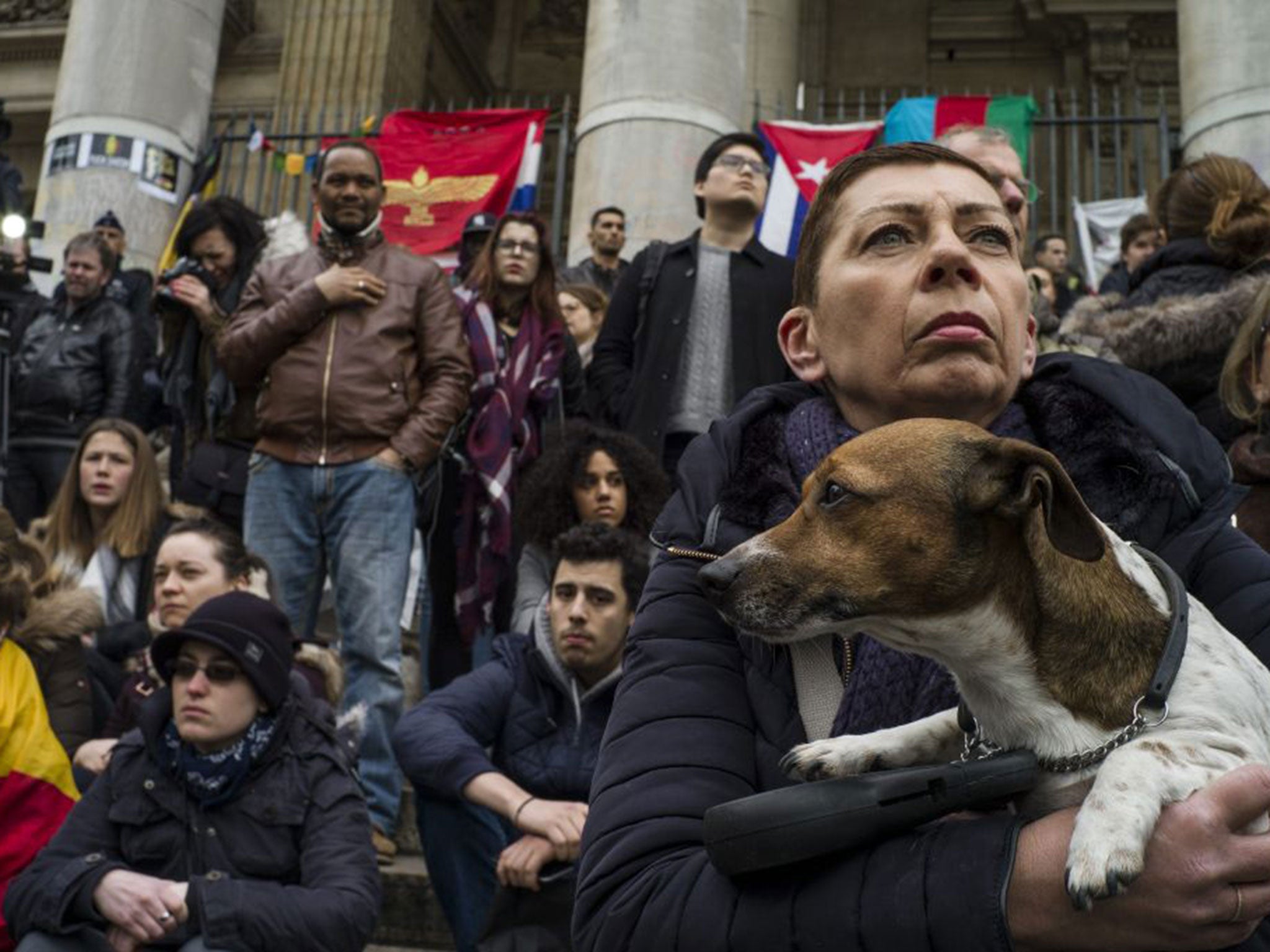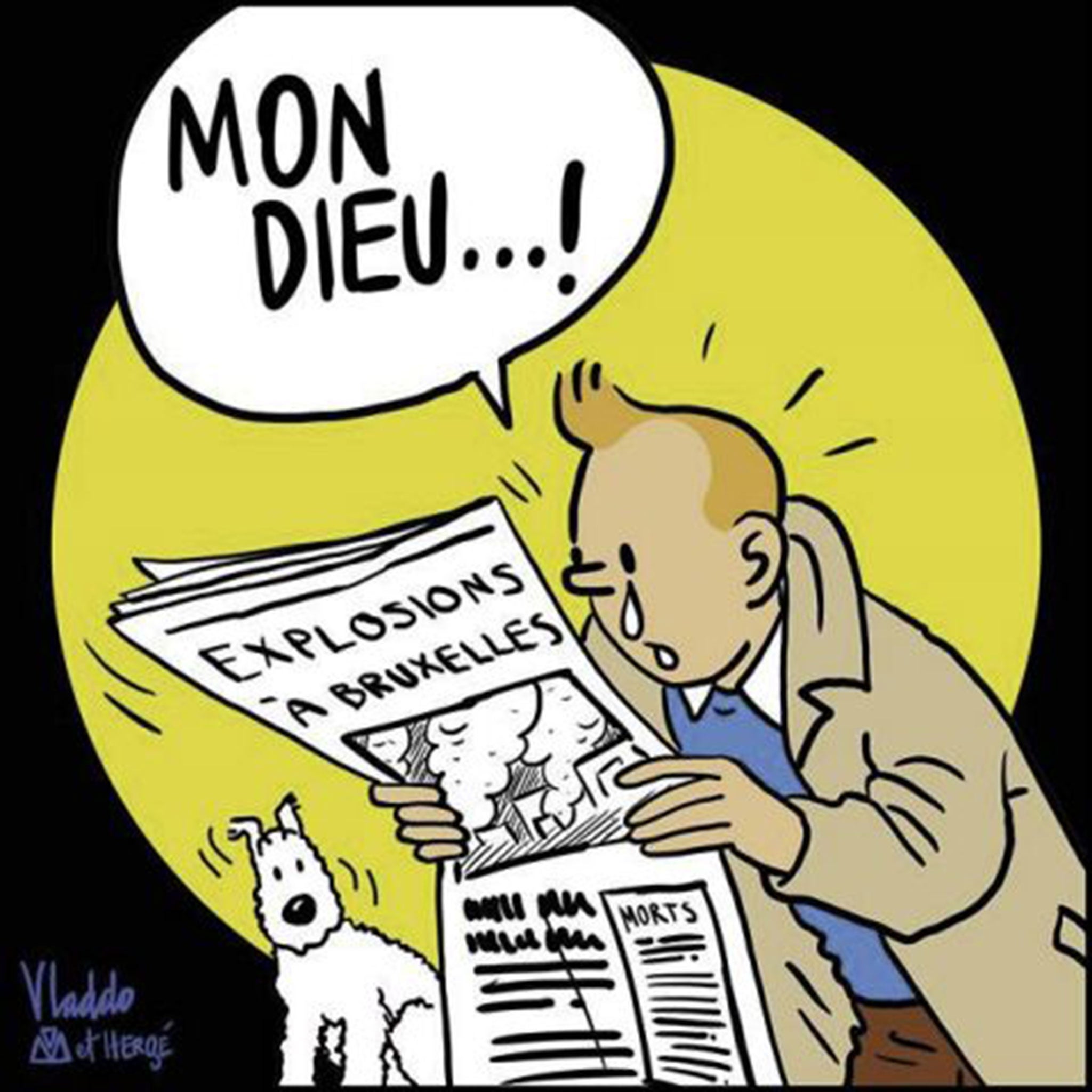Brussels residents unite in solidarity in response to terrorist attacks
Brussels has always had streak of wry, dark humour, and it resurfaced fiercely after three bombs killed at least 31 people

If the bombers aimed to bring Brussels to its knees, they failed. As Kevin Martin, a 24-year-old IT engineer quipped, the incessant roadworks in the city had already done the trick. “We already know what it’s like to be bombed,” he said, morbidly.
Brussels has always had streak of wry, dark humour, and it resurfaced fiercely this week after three bombs at the city airport and the Maelbeek metro station killed at least 31 people.
This is the city of the savage, surrealist painter Magritte. And its most famous landmark is Manneken Pis, a 2ft statue of a boy relieving himself. On social media, he emerged in images doing his business on the terrorists.
Another image was of a bag of Belgium’s much-loved chips arranged to look like a hand raising a middle finger. “This is how we answer the terrorists,” said Pascal Willart, who runs Maison Antoine, the Brussels chip shop patronised by the German Chancellor Angela Merkel last month. “The chip is our heritage, and this is our cultural response to these attacks.”
But social media’s most widely shared icon after the attacks was Tintin, the boy reporter and all-round adventurer created almost a century ago by the cartoonist Hergé, who spent almost his entire life in Brussels. A frame from Tintin In Tibet, showing the hero in tears, was particularly popular.
“The people of Brussels have a sense of freedom; so does Tintin,” says Yves Fevrier, the multimedia director of the Tintin estate, Moulinsart. “Tintin is a good guy who fights bad guys. He embodies great values and he’s still very reassuring as a character. Even if he isn’t real.”
Brussels can be a frustrating city. Politically, it is treated like the bastard child of Belgium’s French and Dutch-speakers, squeezed of vital civic resources. And as home to many of the European Union institutions, as well as Nato and countless other international agencies, parts of the capital can feel like a bureaucratic bubble, cocooned from the real world.
But this week, a city that so often feels distant and disjointed came together in a chorus of defiance and solidarity. Crowds gathered at impromptu vigils, lighting candles, singing and sharing. One of the focal points was the boulevard in front of the former stock exchange building, the Bourse: now closed to traffic, it became a canvas for Brussels residents to scrawl chalk messages and images on the road surface.

The Maelbeek metro station, where 20 people were killed by a bomb on a train, is deep within the city’s European quarter. Until recently, it held the dubious distinction of being the only station in the capital to also host a seedy strip joint on its premises: the notorious Manhattan club was known for catering for Eurocrats seeking a change of scenery. “Perhaps they were trying to repeat 11 September, hitting a different Manhattan,” said Mathilde Dubois, a 32-year-old secretary.
In 2002, the Maelbeek station was revamped: the walls were given white tiling and they were decorated with eight huge but simply sketched giant faces that stared amiably ahead from out of the platform walls. Another poignant picture circulating on social media amended one of the faces, adding a single tear. While the city is still sticking it up to its assailants, it also needs to mourn.
Join our commenting forum
Join thought-provoking conversations, follow other Independent readers and see their replies
Comments